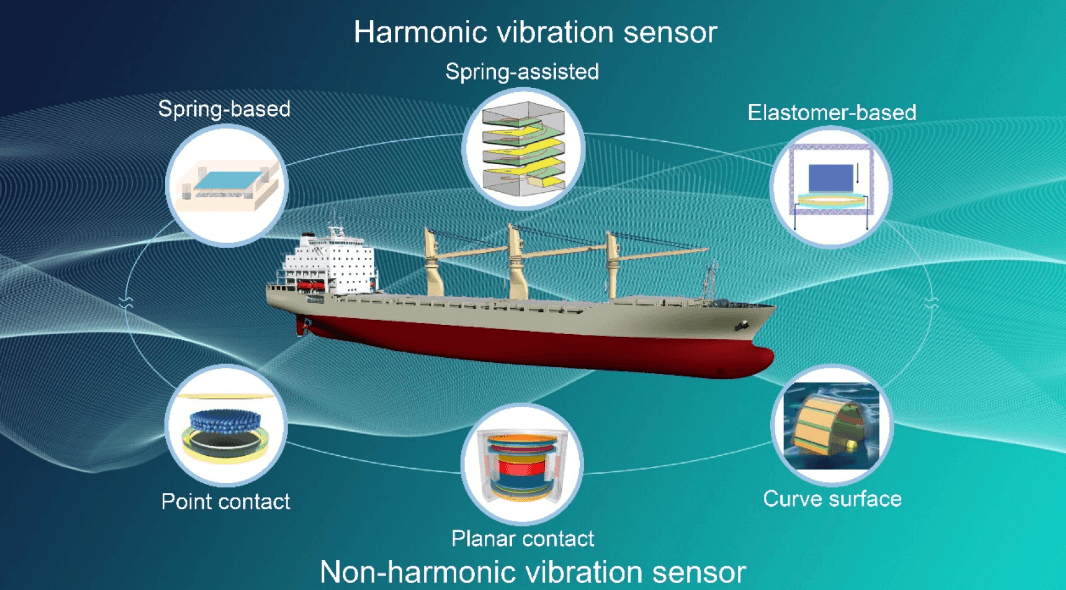Abstract
With the rapid development of advanced electronics/materials and manufacturing, marine vibration sensors have made great progress in the field of ship and ocean engineering, which could cater to the development trend of marine Internet of Things (IoT) and smart shipping. However, the use of conventional power supply models requires periodic recharging or replacement of batteries due to limited battery life, which greatly causes too much inconvenience and maintenance consumption, and may also pose a potential risk to the marine environment. By using the coupling effect of contact electrification and electrostatic induction, triboelectric nanogenerators (TENGs) were demonstrated to efficiently convert mechanical vibration movements into electrical signals for sensing the vibration amplitude, direction, frequency, velocity, and acceleration. In this article, according to the two working modes of harmonic vibration and non-harmonic vibration, the latest representative achievements of TENG-based vibration sensors for sensing mechanical vibration signals are comprehensively reviewed. This review not only covers the fundamental working mechanism, rational structural design, and analysis of practical application scenarios, but also investigates the characteristics of harmonic vibration and non-harmonic vibration. Finally, perspectives and challenges regarding TENG-based marine self-powered vibration sensors at present are discussed.

